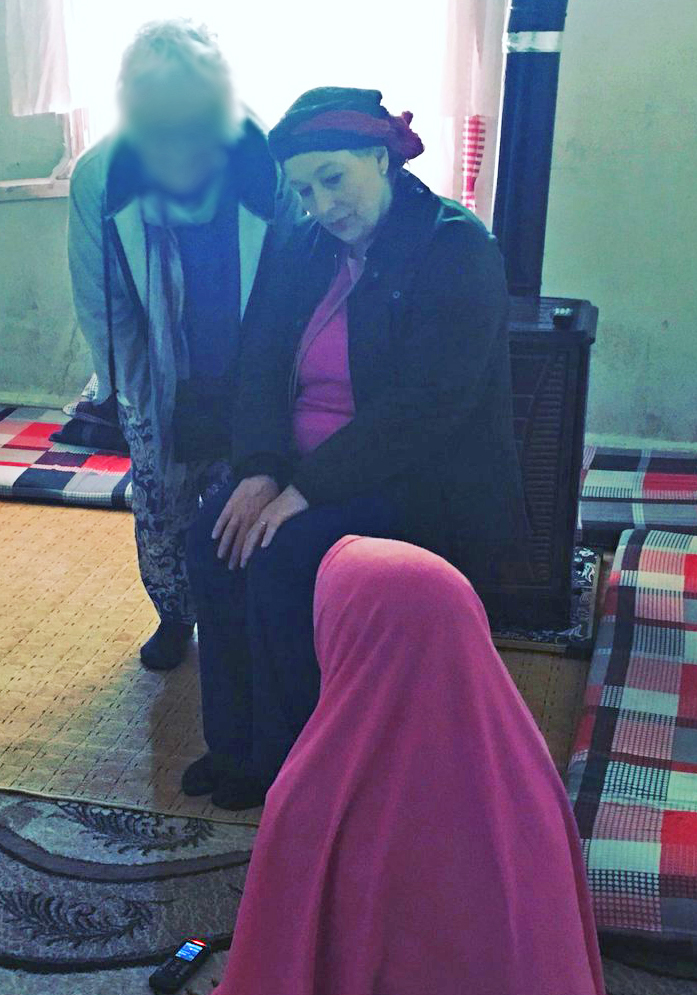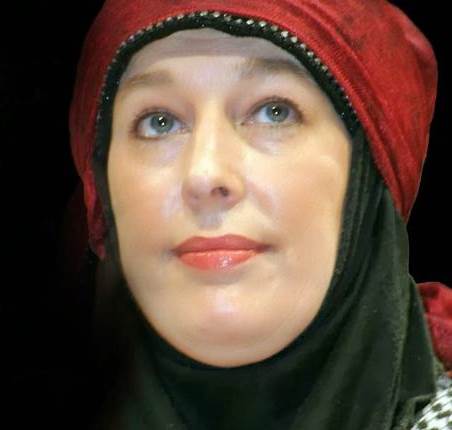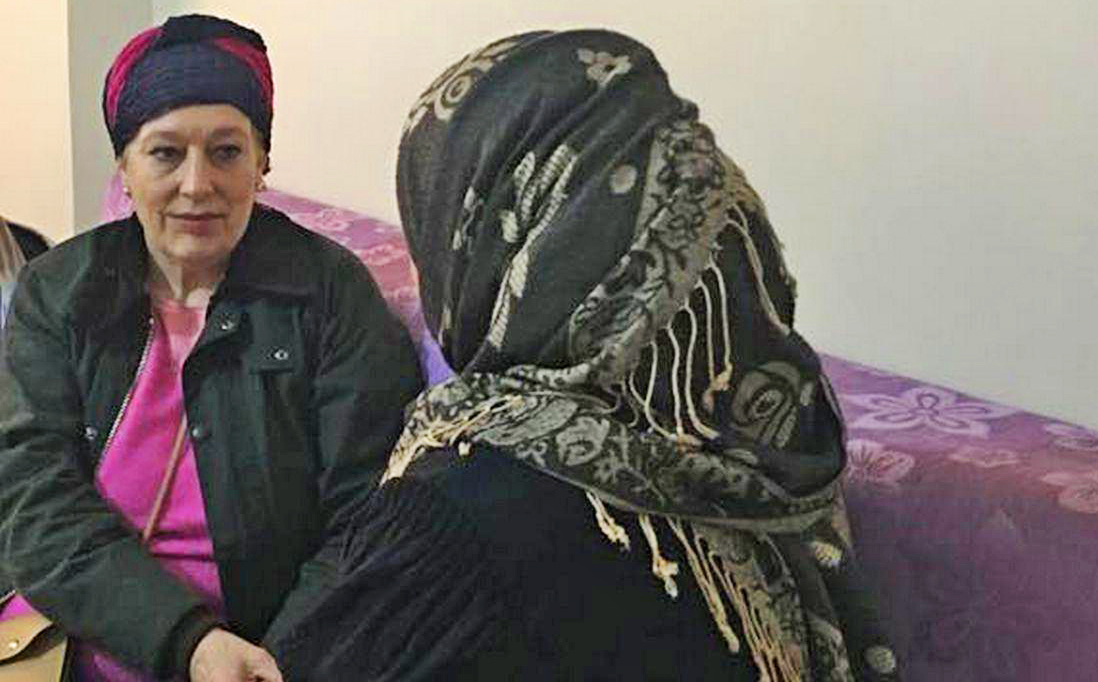The torture victim stood in front of her tormentor wondering what treatment would be meted out this time in the notorious Branch 215, also known as Raid Brigade run by military intelligence in Damascus. Would it be a merciless beating or would it be another sex assault on her already broken body?
OPINIONThe start of the investigation was interrupted suddenly by a ringing telephone and she watched and listened with incredulity as the voice laughing and giggling down the line prompted the torturer to break into a warm smile. Almost automatically, he softened the tone of his voice, for that is the effect most daughters have on their fathers.
In the seconds that he looked away from his torture victim he had morphed from brutal monster into a warm and caring father. This was one of the more chilling aspects that emerged from the stories I heard from Syrian women who have been swept up on an industrial scale and thrown into Bashar Al-Assad’s prisons since the start of the 2011 war. The cold reality is that the mass rapes, sexual assaults, punishment beatings and mental torture are being inflicted on women routinely by someone else’s fathers, husbands and even grandfathers.
At the end of the shift, these men must return to their family homes and normality, having completely destroyed the lives and souls of the women and young girls in their grip. The harsh reality is that if your husband works in Branch 215 then he is probably a serial rapist or is standing by as a spectator watching the most heinous, unimaginable crimes being carried out on women prisoners and girls.
I wonder how this particular monster responded when he got home and was asked, “What did you do today, Daddy?” Obviously he would not be telling his daughter about the teeth he smashed, the bones he had broken or the sex he had forced on his victims.
While trying to shine a light on this dark underbelly of the Assad regime, I met several women who ended up in Branch 215 or other equally terrifying prisons and ghost jails run by the Syrian regime. In every encounter, the image of Bashar Al-Assad loomed large, either in portraits hanging on walls or on the T-shirts worn by the men responsible for the brutal rapes.
Yes, you read that accurately. Incredible as it may seem, the face of the Syrian leader is emblazoned on T-shirts worn by the rapists in his employ, as if he defiles Syrian women by proxy. No wonder that many who manage to get out of the prisons cannot bear to look at the face of the Syrian leader. Those small, thin lips and piercing stare must send shivers down their spines every time they see his image.

“Some days I manage to forget what happened to me,” Noor told me, “and then suddenly I’ll see someone sneer or curl their lip in a certain way and it acts like a trigger; I’m back inside 215 suffering from a flashback, feeling terror and anxiety.” Three years on from her own ordeal she puts on a good face for the outside world but you just know, in her darker moments, that she’s plunged back into the stuff of nightmares.
Badria is not as fortunate; for her, the nightmare continues five years after she and 40 women in Homs were rounded up and taken to an apartment in the Syrian revolution’s fallen capital. When she was arrested she was dressed in black and wore a full face veil, which made her more of a target for her Alawite captors who taunted, mocked and abused her for her piety.
Once the captors had left the large, spartan room she began to perform tayammum using the stone floor because normal wudu — the Islamic ritual of washing before prayer – was impossible. Unknown to her, CCTV cameras caught her actions and as soon as she tried to prepare for Salahthe men returned and beat her with sticks.
She had her feet and wrists bound and was left hanging from a ceiling hook by the rope around her hands. Every time she mentioned the name of God or any Islamic reference she was beaten. Hands shaking, she looked at me and opened her mouth slowly before removing her dentures. Her teeth, top and bottom, had been shattered by the sticks swung hard and with deliberate precision across her face. Her cheekbones were fractured.
“I used to have full breasts,” she said as she lifted her shirt, “but now look.” Doctors have told her that the beatings across her breasts were so severe that the tissue was destroyed and will probably never recover. In terms of dress size she was probably an English 14, medium to large when she was arrested, but as she sat before me she looked more like a Size 6, a skeleton draped in skin which will bear the scars of captivity for life.
Speaking through a translator, she told me how the women in her group were taken into a smaller room where they were raped and humiliated by two or more of the military intelligence officers. There, above the bed, staring down, were portraits of Assad and his brother Maher. To the side of the bed was a small table with various bottles of alcohol for the men to drink.
To combat their drunken state, explained Badria, they took blue pills before forcing themselves on their prey. She also described how some would put an orange pill under their tongue. After some research I concluded that the drugs she described were the blue diamond-shaped Viagra and the orange pill Levitra, which works four times faster in some men, taking effect after just 15 minutes.
There was no need to ask Badria if she had been sexually assaulted; the detail she provided about the inside of the rape room, the pills and the alcohol, and the portraits of the Assad brothers leering down told me all I needed to know. She had been forced into the room on numerous occasions where cameras were also installed and the women were led to believe that their images and photographs had been taken.
She told me of one woman who was “gang raped to death” while another had simply lost her mind. Freedom for Badria came at a price; $17,000 was the ransom paid by her family to get her out of prison. If she thought the nightmare would end then, though, she was wrong. Her husband did not survive the military prison in Homs where he was held; witnesses told her that he died after having his eyes gouged out by his captors.
Her father and one of her brothers were martyred fighting in the Free Syrian Army and the brother who borrowed so heavily to get her released is now in prison himself, being unable to repay the debt. Meanwhile her sister has been arrested and locked up, and those left in the family are trying desperately to raise the $1,000 being demanded for her release. So not only is the Assad regime abusing women on an industrial scale, but it is also making money out of their misery and running what amounts to a sordid slave trade.
Badria’s son, aged around seven, sat in silence as his mother told her story; every now and again, when the details became too graphic, she sent him on an errand. He looked nearly as traumatised as his mother who was shrinking before his eyes in stature and health. She looked so frail as I got up to leave, that it was difficult to give her a sisterly hug; I honestly felt that she might snap.
At another house I was taken to I met a mother-of-five called Aishah who was arrested in the early days of the war because she had taken part in the street demonstrations. She was taken to Branch 215 where she was beaten “in a humiliating manner”. She was moved around the intelligence system and taken to three other branches, including one at Adra.
During her incarceration she saw girls as young as seven, old women and every age in between detained, raped and abused. She spoke of the five military officers who put on T-shirts bearing the portrait of Assad before carrying out their gang rape on one woman. “They declared Assad to be their god,” she said.
Now living safely on the Turkish border near Hatay with her five girls aged three to 17, Aishah is widowed. Her husband, who was also arrested and abused, survived his prison ordeal only to be killed in an air raid in eastern Ghouta three years ago just after the birth of his fifth child.
The women I met all want justice. They want to see the men who tortured, raped and abused them stand trial for the war crimes that they have all undoubtedly committed. I’d like to be able to report that they are now safe and secure but I’m not sure that they will ever be able to recover fully. One told me that the moment she closes her eyes she’s back inside the hellish prison, waiting for Assad’s men to pounce.
What makes this all so much worse is that there are believed to be around 7,000 women and 400 children still inside the Syrian regime’s jails. That is what last week’s Conscience Convoy to the Turkey-Syria border was all about; 10,000 women from 55 nations assembled to demand the release of the prisoners.
I don’t care if it takes money to get them out of the grip of these monsters, but having spoken to the victims, I know for certain that Assad can never be part of the solution in Syria. In more than 40 years as a journalist, I’ve interviewed prisoners from Abu Ghraib in Iraq, Bagram in Afghanistan, Guantanamo, Abu Saleem in Tripoli and Toulal 2 Prison in Meknes, Morocco, but I have never encountered evidence of so much depravity and inhuman behaviour on such a large scale as what is unfolding right now — even as you read this — in Assad’s prisons.
There is a brutal regime in Damascus, run by monsters who masquerade as doting husbands and family men in homes around Syria while carrying out of the most horrendous crimes. “What did Daddy do at work today?” Trust me, you don’t want to know, habibi; Daddy and his monstrous associates have to be stopped.
The statements, views and opinions expressed in this column are solely those of the author and do not necessarily represent those of Independent Press.






